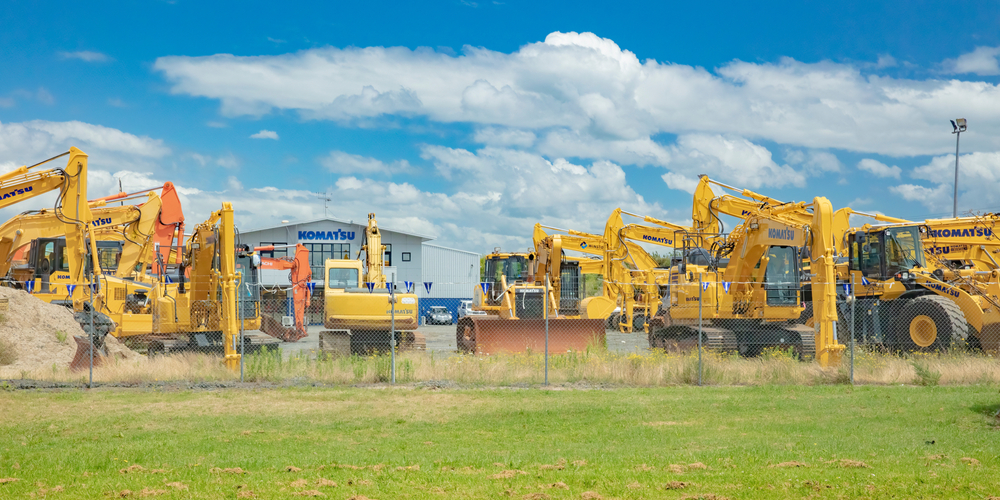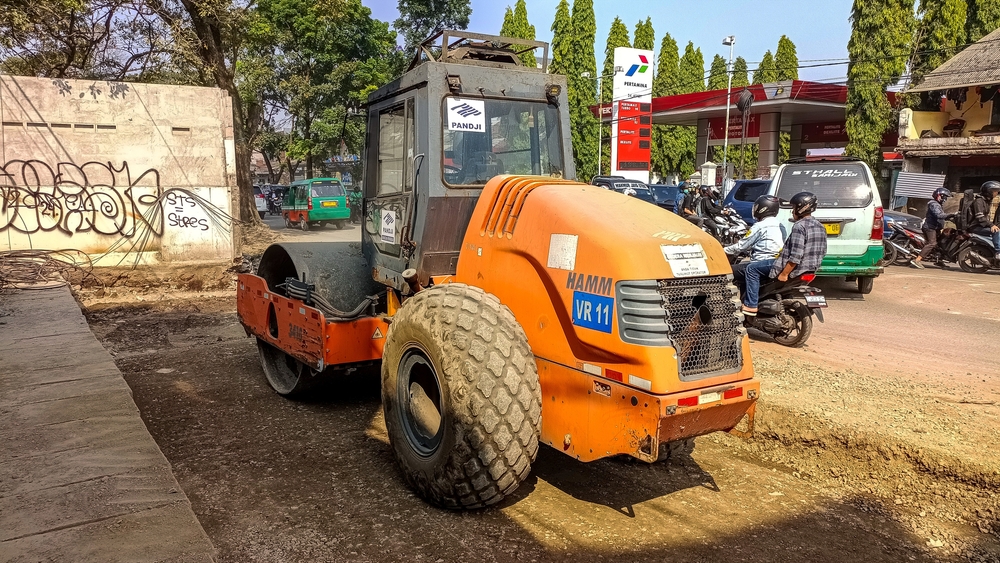Material handling is a critical aspect of construction projects, influencing efficiency, safety, and overall project success.
Two of the most versatile and widely used machines in this domain are front end loaders and skid steers.
Understanding the differences between these two pieces of equipment, often discussed in the context of front end loader vs skid steer, is essential for making informed decisions that align with specific project requirements.
Front End Loaders
Front end loaders are powerful machines known for their large buckets and lifting arms, which make them ideal for handling heavy materials.
Features
Large Buckets
Front end loaders are equipped with large buckets, enabling them to scoop and transport substantial amounts of material. These buckets are typically designed to handle heavy and bulky materials like gravel, sand, and soil, making them indispensable on construction sites.
Lifting Arms
The robust lifting arms of front end loaders provide significant lifting capacity. These arms can lift heavy loads to considerable heights, making front end loaders suitable for loading materials onto trucks or into large containers.
The hydraulic systems powering these arms ensure smooth and precise control during operations.
Advantages
Heavy Material Handling
Front end loaders are perfect for handling heavy and bulky materials such as gravel, sand, and soil. Their large buckets and powerful lifting arms make them efficient in moving large quantities of material quickly.
Efficiency in Loading
The efficiency of front end loaders in loading tasks is unmatched. Their ability to lift and transport heavy loads in one go reduces the time and labor required, improving overall productivity on construction sites.
Versatility in Excavation
Front end loaders can also perform excavation tasks, adding to their versatility on construction sites. They can dig, lift, and move earth, making them useful for a variety of earthmoving tasks beyond just material handling.
Skid Steers
Skid steers are compact, maneuverable machines with the capability to use various attachments, making them extremely versatile.
Features
Compact Size
Skid steers are smaller in size, allowing them to operate in tight spaces where larger machines cannot fit. This compactness makes them ideal for urban construction sites, indoor projects, and any environment with limited space.
Maneuverability
Their design enables exceptional maneuverability, making them easy to operate in confined areas.
Skid steers can pivot in place, providing a high degree of control and precision in movement, which is especially useful in tight or congested work areas.
Attachment Capabilities
Skid steers can be equipped with a wide range of attachments, including buckets, forks, augers, and trenchers. This ability to switch attachments quickly and easily makes skid steers incredibly versatile, allowing them to perform multiple functions with a single machine.
Advantages
Tight Space Operation
Skid steers excel in environments where space is limited, such as indoor projects or congested job sites. Their compact size and maneuverability make them the go-to choice for tasks in restricted areas.
Landscaping
Their maneuverability and attachment versatility make skid steers ideal for landscaping tasks. They can be equipped with specialized attachments like landscape rakes, tree spades, and soil conditioners, making them highly effective for various landscaping needs.
Multi-Purpose Applications
The ability to quickly switch attachments allows skid steers to perform a variety of tasks, from digging to lifting to grading. This multi-functionality makes them a valuable asset on any construction site, capable of adapting to different project requirements.
Comparison of Features
When comparing front end loaders and skid steers, several key features stand out, each influencing their suitability for different tasks and environments.
1. Size
These machines are larger and bulkier, making them more suited for open spaces and large construction sites. However, their larger footprint can be a disadvantage in confined or crowded job sites where maneuverability is restricted.
In contrast, skid steers are compact and agile, designed to operate efficiently in tight spaces. This compactness is a significant advantage when working in environments where larger machinery cannot fit.
2. Lifting Capacity
Typically, front end loaders have a higher lifting capacity compared to skid steers. Their powerful hydraulic systems and robust design allow them to lift and transport heavier loads, making them ideal for tasks that involve moving large volumes of material, such as loading trucks, lifting pallets, and handling bulk materials like gravel, sand, and soil.
While skid steers have a lower lifting capacity, they are still capable of handling a wide range of materials and tasks. Their strength lies in their versatility and ability to perform a variety of jobs with different attachments, although they are not as powerful as front end loaders when it comes to lifting very heavy loads.
3. Mobility
Due to their size and design, front end loaders are less maneuverable than skid steers. They require more space to operate and turn, which can be a limitation in confined areas. However, their mobility is adequate for large, open construction sites where space is not an issue.
Skid steers excel in mobility and maneuverability. Their ability to pivot in place and make tight turns makes them highly effective in confined spaces.
4. Attachments
While front end loaders can use various attachments, their range is generally more limited compared to skid steers. These attachments enhance the versatility of front end loaders but do not match the extensive variety available for skid steers.
One of the key strengths of skid steers is their broad range of attachment options. This extensive array of attachments allows skid steers to perform a wide variety of tasks, from digging and grading to lifting and transporting, making them highly adaptable to different job requirements.
5. Cost
Generally, front end loaders are more expensive than skid steers due to their size, power, and lifting capacity. Fuel consumption, parts replacement, and regular maintenance tend to be more costly for front end loaders.
Skid steers are usually more cost-effective, both in terms of initial purchase price and operational costs. Their smaller size and lower lifting capacity contribute to reduced fuel consumption and maintenance expenses.
Additionally, the versatility provided by their wide range of attachments can offer cost savings by reducing the need for multiple specialized machines on a job site.
Ideal Use Cases
Front End Loaders
Large-Scale Material Handling
Perfect for projects that require moving large volumes of materials quickly. Their large buckets and lifting capacity make them highly efficient for such tasks.
Earthmoving
Suitable for excavation and earthmoving tasks. Front end loaders can dig, lift, and transport earth, making them essential for large-scale construction projects.
Construction Sites with Ample Space
Best used in open areas where their size and capacity can be fully utilized. Their large footprint and turning radius are better suited for spacious construction sites.
Skid Steers
Landscaping
Ideal for landscaping projects due to their maneuverability and versatility. Skid steers can handle various landscaping tasks, from grading and leveling to planting and trenching.
Indoor Projects
Their compact size makes them suitable for indoor construction and renovation tasks. Skid steers can navigate through doorways and operate in confined indoor spaces.
Precision Tasks
Excellent for tasks requiring precise movements and control in confined spaces. Their ability to pivot in place and maneuver in tight areas makes them perfect for detailed and delicate tasks.
Considerations for Choosing
When deciding between front end loaders and skid steers, consider the following factors:
Project Requirements
Assess the specific needs of your project, including the type and volume of material to be handled. Determine whether heavy lifting or versatility in tight spaces is more crucial for your project.
Site Conditions
Evaluate the space available on the construction site and the accessibility of the work area. Consider whether the site is open and spacious or confined and restricted.
Budget
Consider the cost of the equipment and your project budget. Weigh the initial investment, operational costs, and maintenance expenses.
Operator Preferences
Take into account the preferences and experience of the operators who will be using the equipment. Ensure that the chosen machine is user-friendly and suitable for the operators’ skill levels.
Conclusion
Both front end loaders and skid steers offer unique advantages for material handling in construction projects, each excelling in different aspects of performance and functionality.
Front end loaders excel in handling heavy materials and performing large-scale tasks, while skid steers shine in versatility and maneuverability, particularly in tight spaces.
Each machine brings its own set of strengths to the table, and understanding these can help you optimize efficiency and productivity on your construction projects.









